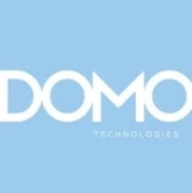

Quest SharePlex and Domo compete in the data management and business intelligence sectors. Domo appears to have the upper hand due to its comprehensive analytics capabilities, making it more appealing for data-driven decision-making.
Features: Quest SharePlex offers reliable database replication, efficient data integration, and seamless data consistency across systems. Domo provides robust data visualization tools, a cloud-based architecture, and extensive data connectors, enhancing flexibility and real-time insights.
Room for Improvement: Quest SharePlex could improve by enhancing its cloud capabilities, simplifying its management interface, and expanding data source compatibility. Domo can benefit from more standardized visualizations, reducing complexity for new users, and lowering overall costs.
Ease of Deployment and Customer Service: Quest SharePlex provides efficient on-premises deployment, tailored to existing infrastructure, with dedicated customer support for customization and technical assistance. Domo offers cloud-native deployment requiring minimal infrastructure, rapid implementation, and extensive support with community resources.
Pricing and ROI: Quest SharePlex is often more budget-friendly with predictable licensing costs, providing steady ROI through its reliable data replication. Domo follows a subscription-based pricing model that some find high, but its feature-rich offering and impact on analytics justify the cost for many users.

Domo is a cloud-based, mobile-first BI platform that helps companies drive more value from their data by helping organizations better integrate, interpret and use data to drive timely decision making and action across the business. The Domo platform enhances existing data warehouse and BI tools and allows users to build custom apps, automate data pipelines, and make data science accessible for anyone through automated insights that can be shared with internal or external stakeholders.
Find more information on The Business Cloud Here.
SharePlex database replication empowers your organization to achieve its database goals now and into the future. Make use of built-in monitoring, conflict resolution, data comparison and synchronization capabilities backed by award-winning support.
We monitor all Data Integration reviews to prevent fraudulent reviews and keep review quality high. We do not post reviews by company employees or direct competitors. We validate each review for authenticity via cross-reference with LinkedIn, and personal follow-up with the reviewer when necessary.